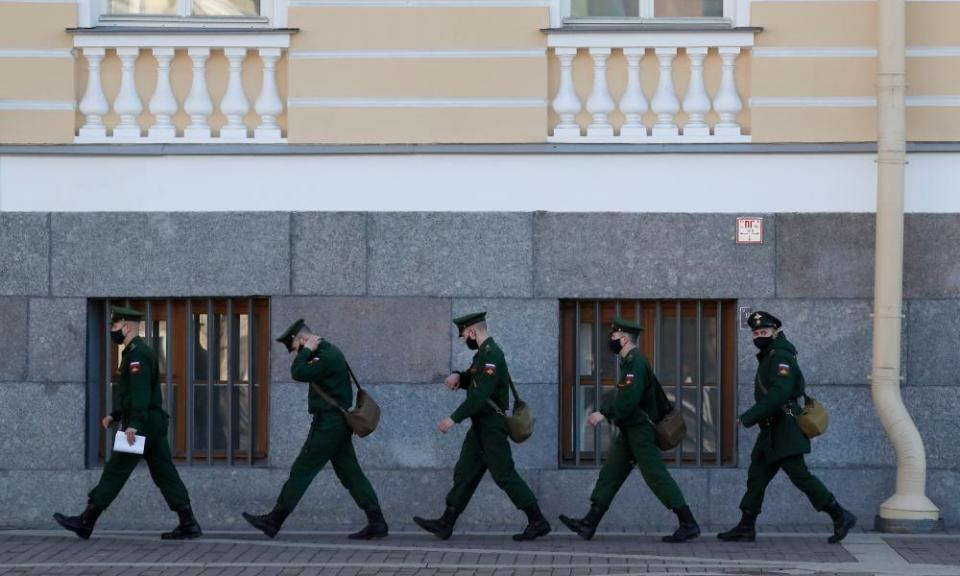St Petersburg death tally casts doubt on Russian coronavirus figures

New mortality data from Russia’s second-largest city has reignited questions about whether the country’s official tally has discounted thousands of deaths tied to the coronavirus outbreak.
St Petersburg issued 1,552 more death certificates this May than in the previous year, a nearly 32% rise indicating that hundreds of deaths tied to the pandemic are not reflected in the city’s official coronavirus death toll for the month of 171.
It is not clear how many of those people had tested positive for coronavirus or were suspected to have been infected. But statisticians and doctors have previously told the Guardian that 75% or higher of “excess deaths”, the number of deaths exceeding what would regularly be expected, are likely to be tied to the coronavirus outbreak. That means potentially 1,000 additional deaths in St Petersburg in May tied to the pandemic.
The new data, released by the city on Wednesday and first reported by Reuters, further indicates how Russia’s conservative account of its coronavirus death toll may be missing out thousands of deaths, while feeding political talking points and informing policy decisions about tackling the outbreak and reopening the country.
Russia has reported a 1.2% mortality rate from the disease, while Brazil and the US have reported higher than 5.6% and 5.8%, respectively, according to Johns Hopkins University. France posted a 15.4% mortality rate and Italy has posted a 14.4% mortality rate. But experts have said that comparing national mortality rates is misleading when reporting standards vary widely and that excess deaths are likely to give a clearer picture of the death toll from the disease.
Russian officials have aggressively denied that the data on coronavirus deaths is being massaged. Even if corrected upward to reflect likely deaths from coronavirus, the death toll in cities such as St Petersburg or Moscow will probably remain far lower than in cities such as New York and London.
Still, data posted in recent weeks by St Petersburg, Moscow and in regions such as Dagestan, has caused scandals, showing that deaths from pneumonia likely tied to the outbreak could be far higher than the official coronavirus death toll, sometimes by a factor of 10. In many other regions, data on total mortality for May and April remains unavailable, making it difficult to corroborate the government’s official tally of deaths from coronavirus.
The government’s handling of the outbreak, including the economic backlash from tough self-isolation measures, has become a sensitive political issue. Amid economic difficulties, Vladimir Putin’s approval ratings reaching their lowest point in 20 years in early May, the independent Levada Centre reported.
Russian officials have told the public to expect a sharp rise in mortality from Russia’s coronavirus outbreak, the third largest in the world after the US and Brazil. But Russia’s state statistics agency postponed plans to release April’s mortality data for the whole country, saying it needed extra time because of closures of local registration offices. The data will be released on 15 June.
Related: Coronavirus world map: which countries have the most Covid-19 cases and deaths?
St Petersburg’s governor, Alexander Beglov, said in mid-May that 694 people had died of pneumonia since the coronavirus outbreak began, while the city had tallied just 63 deaths from the disease. Russia’s conservative reporting standards require an autopsy to show that patients died of coronavirus, rather than simply that they died while infected with the disease, unlike countries in western Europe.
The St Petersburg data showed that the city issued 6,427 death certificates in May of this year, a rise of 1,552 recorded deaths from last May and 1,400 deaths higher than the average for that month over the previous decade. More deaths were recorded in May 2020 than in any month over the previous decade. Death rates usually rise in winter and early spring, occasionally to over 6,000, as recently as 2018.

 Yahoo News
Yahoo News 